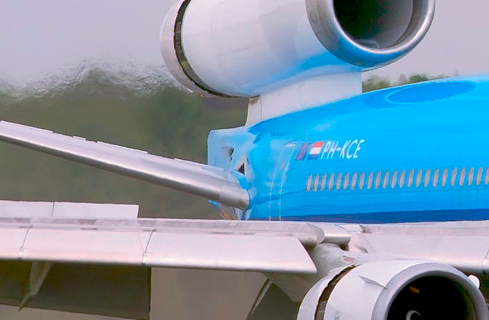Here McDonnell Douglas does not use the roller-type seal. Their own method uses doors that pivot out of the stabilizer's way. From their patent:
In your photo you can see the hinge line of the upper door (42) as well. Their method inherently doesn't fully cover the opening at large deflections, which is "permissible":
While it is important that the cutout portion be covered by fairings or doors during the cruise attitude of the stabilizer, it is less important in the extreme positions of takeoff, climb or landing, all of which occur at lesser airspeeds. Thus, while one of the doors is pivoted inwardly on one stabilizer surface to permit stabilizer movement in that direction, the extreme pivotal movement of the stabilizer may cause a gap or air space between the other door and movable fairing on the other stabilizer surface. However, this is permissible since it occurs only when the aircraft is in a non-cruise attitude.
— Backlund, J., and R. Gibbs. "Fuselage seal." U.S. Patent No. 3,756,529. 4 Sep. 1973. Current Assignee: McDonnell Douglas Corp
You can also see it on the DC-10-derived MD-11:
— Rob Schleiffert via flickr.com [cropped]
Tip: search for photos of landing to get more hits, as this is when the THS is at a high trailing edge up position (taxiing for takeoff may also work).




